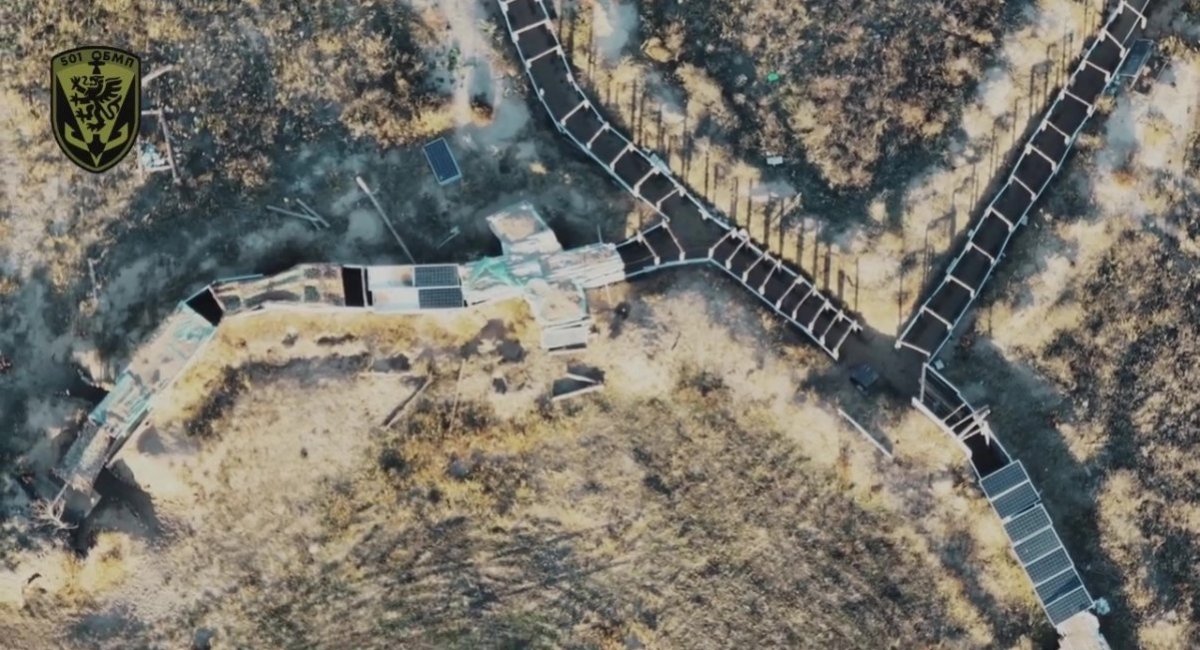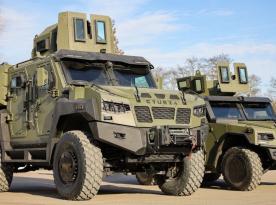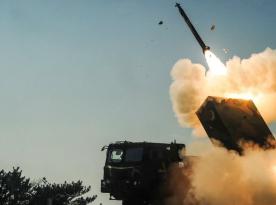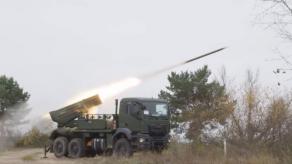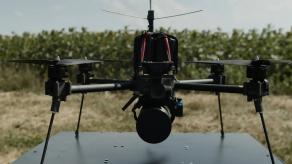A video from the Ukrainian 501st Marine Infantry Battalion seemingly depicts just another attack on russian positions with explosive FPV drones but unexpectedly reveals that the russian forces are starting to upgrade the trenches with anti-drone protection.
The footage shows Russians constructing canopies and improvised screen protections over their positions. The original from the marines is available here.
Read more: What's the Chance That FPV Drones Can Replace Mortars on the Battlefield in Ukraine
Notably, the russians even use stolen solar panels as shields. These structures enclose trenches from above and the sides, the construction is still in progress.
Any attacks by drones with vertically falling droppable grenades actually become more difficult due to these protections, the same goes for manually directed FPV drone strikes.
In this case, however, these countermeasures did not entirely prevent a Ukrainian drone operator from approaching the trench entrance and targeting the enemy.
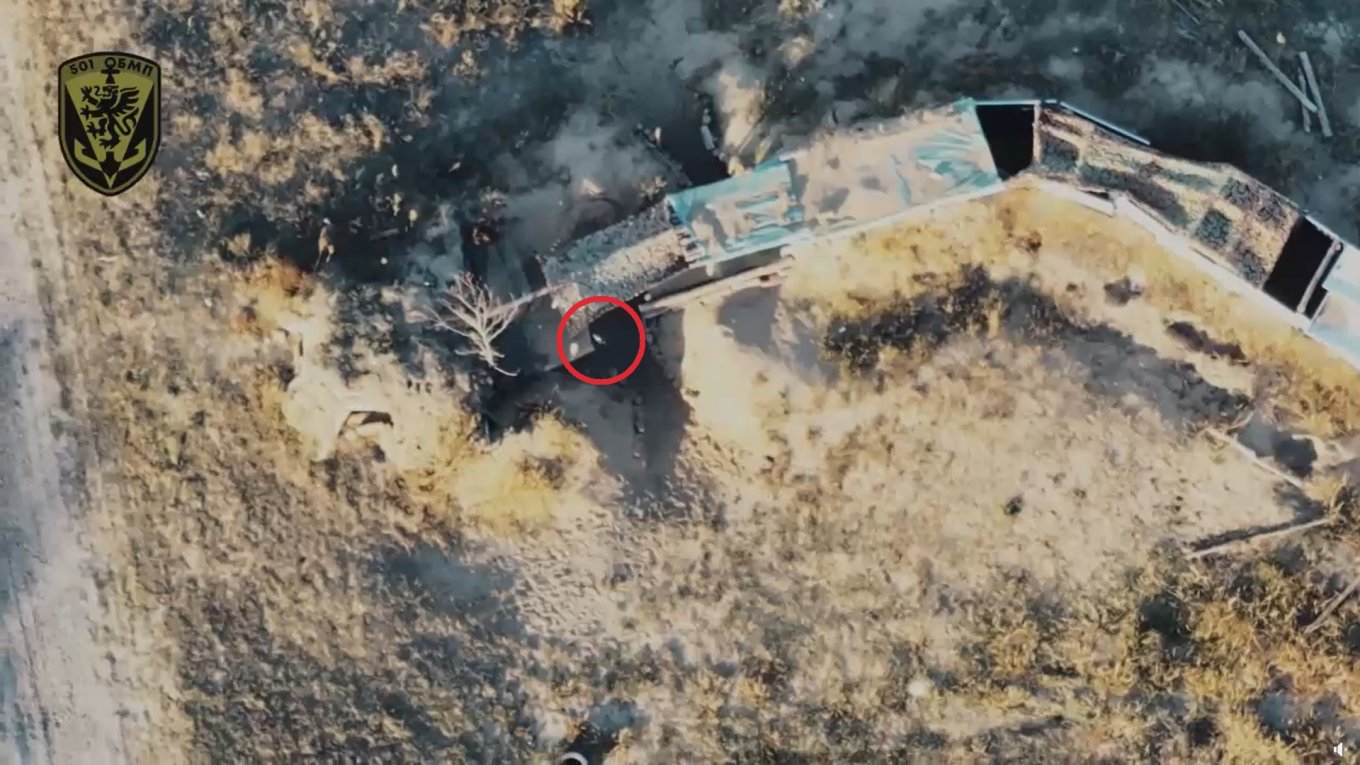
Nonetheless, the appearance of such canopies adds complexity to combat tasks, demanding greater professionalism from UAV operators. To compound matters, similar protective solutions may soon proliferate across other frontline areas. The russian positions might become entirely covered and therefore protected from drones, not just the dugouts.

We should also not discount the active deployment of trench electronic warfare by Russians, incorporating cheap and sometimes experimental electronic warfare systems.
Read more: Success of russian Electronic Warfare Should Not be Overstated, and Here is Why
Therefore, despite the recently popular belief that FPV drones can entirely replace artillery, particularly mortars, this is not the case, and the Ukrainian soldiers explained why. Unlike explosive drones, mortar shells could easily penetrate these rudimentary anti-drone screens.
The widespread adoption of such structures in Russian lines will most certainly increase demand for more powerful drones capable of carrying and dropping mortar shells.
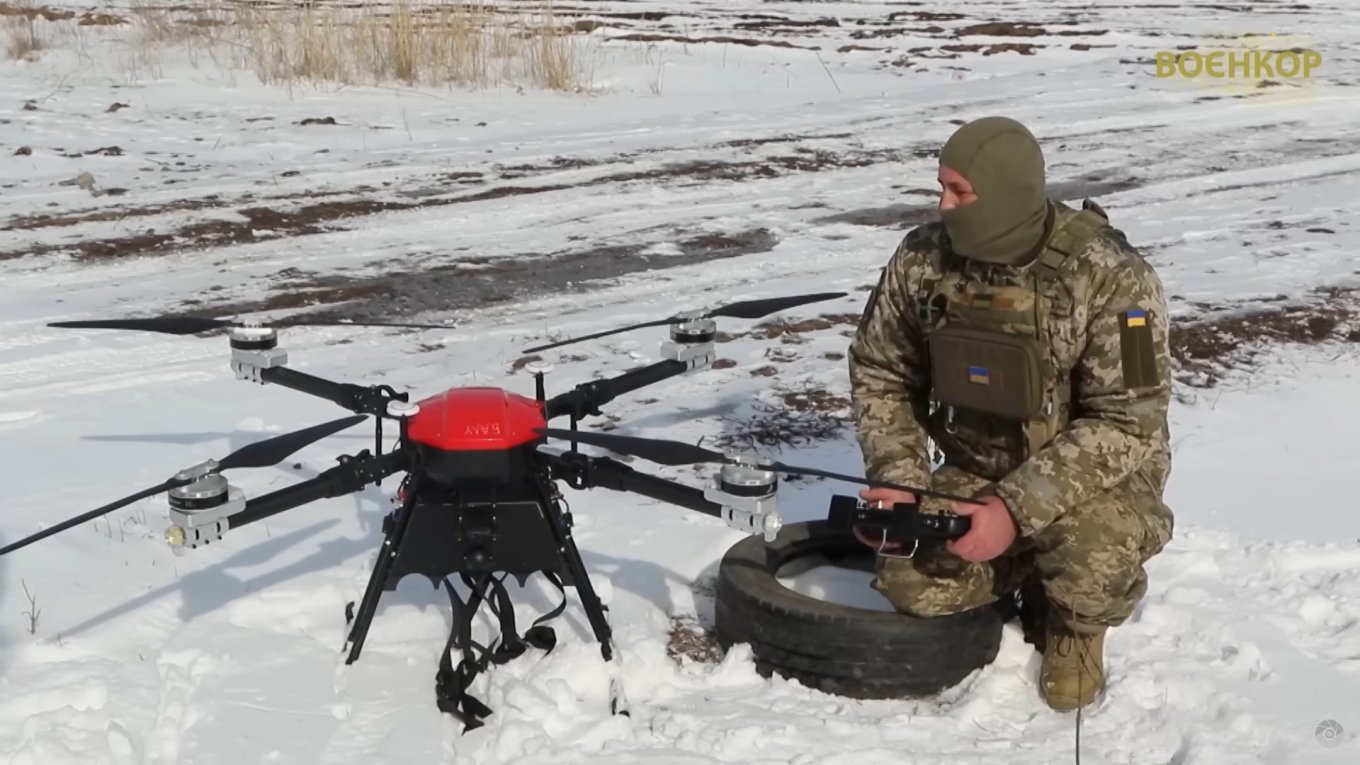
Nevertheless, FPV drones retain their effectiveness on the battlefield, serving as a cost-effective non-line-of-sight weapon against not only armored vehicles and rare equipment but also enemy infantry, as demonstrated in a video from the SSU with numerous episodes of FPVs targeting russian manpower.
Read more: Newly Developed Identification Friend or Foe System Will Save russian Drones From Allied Air Defenses



